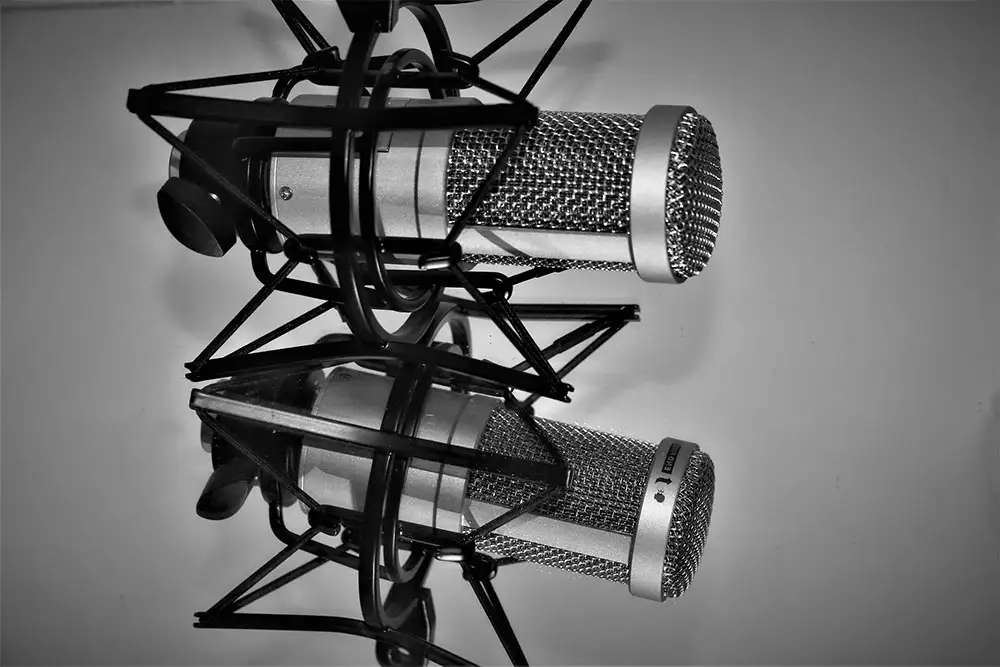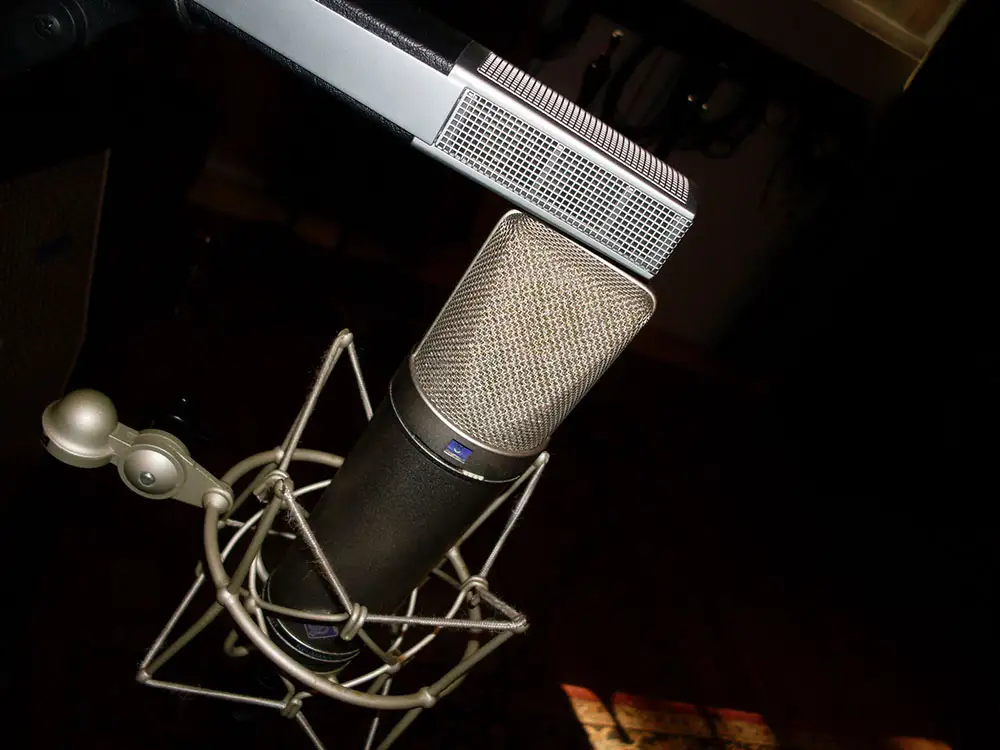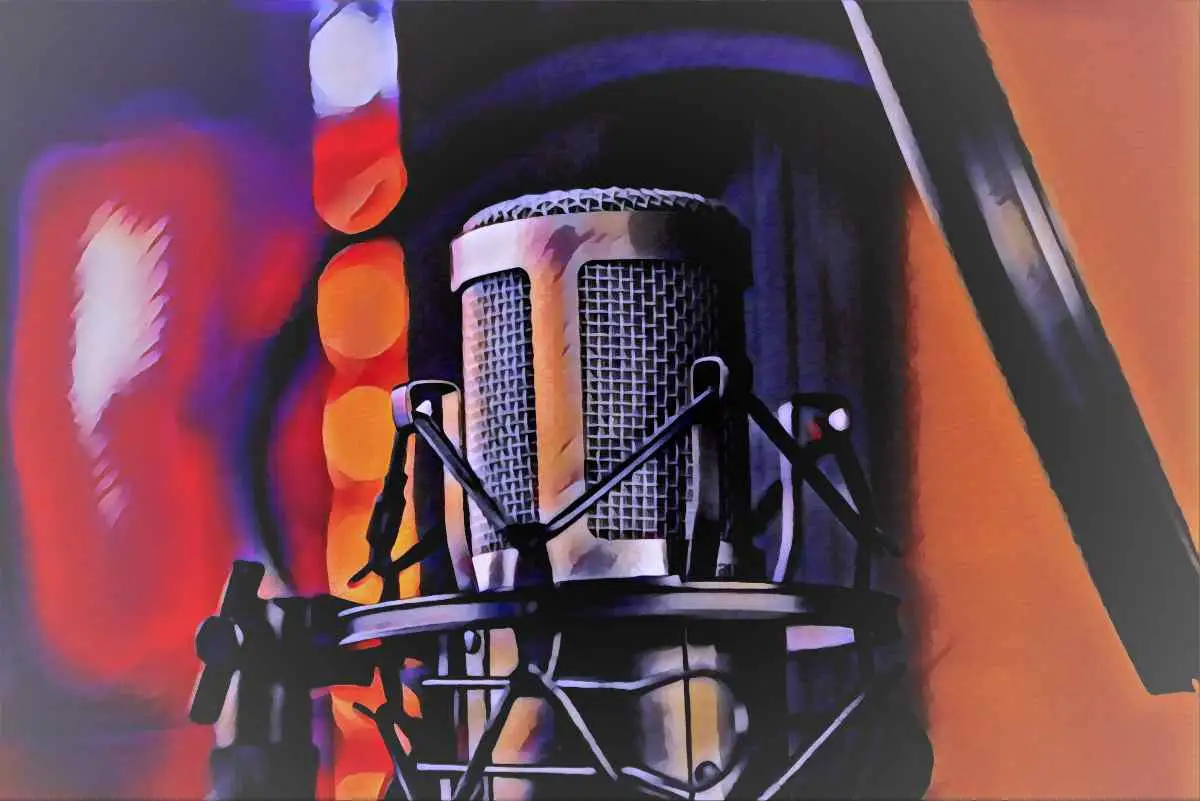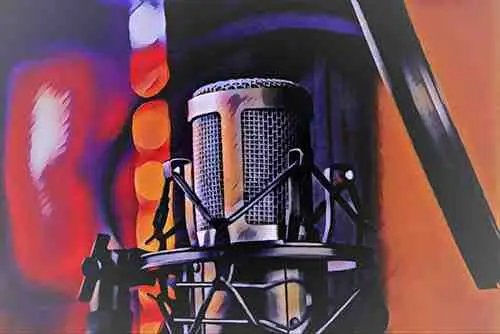Mid/Side mic recording ("M/S” or "MS" for short) is one of many stereo recording techniques with a wide range of applications. Every great audio production begins with a great recording. Achieving a quality recording depends on several factors: performance, instrument fidelity, acoustic room treatment , and, of course, the microphone(s) you use.
Indeed, the mics you employ for a particular recording and how you arrange them can make or break your production from its earliest stages. Knowing a thing or two about various mic configurations, such as the MS recording method, gives you a significant advantage in the studio, as well as additional freedom to experiment.
Let’s get to the heart of MS recording and see why it’s worth incorporating in your productions.
What Mid/Side Recording is and Why it Matters
Mid Side microphone recording is a stereo recording technique that gives the mixing engineer complete control over the recorded audio’s stereo image (i.e., how far it’s panned left and right ).
Better yet, this flexibility is afforded to you after the recording has taken place. In other words, setting up your microphones in this manner gives you the freedom to adjust a track’s stereo width at your leisure. Moreover, Mid Mic recordings can easily collapse into a centered mono track for more precise mixing, and they’re highly phase-coherent.
If you're wondering why any of this matters, consider what's at stake in the studio. Whether you're recording yourself or paying someone else per track/by the hour, time is money. The sooner you can capture the precise sound you're going for, the better.
Because the Mid Mic recording method provides both a mono and stereo image you can switch between and adjust on a scale, you can spend less time recording a given audio source and more time mixing it when the time comes.
In this way, the Mid Mic technique sets you up for greater success while saving you time and money. If nothing else, when you set it up correctly and use quality mics, this recording method offers a great sound.
A Brief History of Mid/Side Recording
The age of something doesn't necessitate its worthiness. However, certain things stick around for a reason - the Mid/Side recording technique is no exception to this rule. Nearly a century ago, in 1933, Alan Blumlein (his last name should be familiar to audiophiles everywhere) discovered and patented the MS method. The EMI engineer known for his contributions to stereo sound tested and proved the merit of MS by implementing it in some of the earliest stereophonic recordings.
Beyond its applications in music studio production, the MS recording technique has become a major mechanism in broadcast radio and capturing live music productions.
The Mid/Side vs. XY Microphone Recording Technique

Stereo recordings are common in modern music production. To record in stereo means to record a single sound source with two mics (one for the left channel and the other for the right). Stereo recordings provide a sense of space, giving the listener a more dynamic experience that spans each ear and the spaces in between.
Of course, recording in stereo isn’t without its challenges. As we discussed in our previous blog, “Audio Phase: How It Works And Why It Matters,” recording one instrument into two separate channels can introduce phase problems. Depending on the distance and angle between two microphones, the recorded audio can take on a different quality when listened to in stereo vs. mono (i.e., a single channel).
MS vs. XY
Audio engineers and producers have developed specific stereo recording techniques over the years to anticipate potential phase problems. Mid/Side (MS) recording is one of these tried and true methods, but it’s not the most popular one – the “XY” microphone technique has earned that title. This setup has the two mics closely facing each other (usually one just above the other), forming a 90-degree angle.
The primary difference between MS and XY stereo recording is that the former is designed to simultaneously capture both a mono and stereo image of a given audio source. In contrast, the latter merely captures the left and right sides (i.e., stereo).
Put another way, the XY recording technique is never mono-compatible, instead offering distinct left and right channels. The MS method, on the other hand, provides the best of both worlds, letting you track a mono and stereo recording at the same time.
Moreover, an MS recording tends to capture more room ambiance than an XY recording, which may be beneficial or detrimental depending on your goals.
Another advantage MS recording has over XY recording (and other microphone recording techniques in general) is that the former allows you to manipulate the width of the stereo spread after you've completed your recording.
In other words, XY recording requires that you set up the stereo mics just right before you press record. Once you've tracked a sound source in XY, you won't be able to organically adjust how wide it sounds during the mixing process .
Other stereo recording methods such as “ORTF,” “Spaced pair/A-B,” and “Decca Tree” are also commonly used stereo miking configurations. Each of these stereo recording techniques is worth exploring in its own right, but we’ll focus on the MS method for now.
How the Mid/Side (MS) Recording Technique Works
The name of this technique neatly reveals a bit about its setup. Essentially, one mic is placed in a central position (ergo, “mid”) while the second is turned to its “side” 90 degrees and placed directly above or below the first. One mic captures the audio coming straight at it in this position while the other captures the stereo image.
Not just any two mics will do for this configuration to pan out (no pun intended). As a general rule, you’ll want to invest in two different kinds of mics for this setup to work. You can also get away with using two similar mics, but only if each one is configured with specific pickup patterns.
The “Mid” mic should receive audio in a cardioid or hyper-cardioid pattern to pick up sound primarily from the front; the “Side” mic needs to pick up audio in a figure-8 pattern, which is to say from the left and the right.
As a result, the center channel will mainly receive the sound head-on while the other will pick up the room’s reflections from the left and right sides – each mic’s active zone is the other’s dead zone or “null spot,” resulting in a centered, coherent image.
This video from RecordingMag does a great job explaining and showing how the MS setup works.
The Benefits of the Mid/Side Mic Technique
You might wonder why some people decide to use this stereo recording method as opposed to others. While all stereo recording configurations deliver specific benefits, the MS technique is a solid all-around choice.
The three main advantages of setting up an MS recording are flexibility, control, and mono compatibility.
Flexibility
First, let’s flesh out the flexible aspect of MS recordings.
As mentioned earlier, you can use different mics to achieve a worthy MS recording – this isn’t always the case for other stereo recording techniques.
With XY, ORTF, and spaced pair recordings, both mics usually need to be identical. For MS recordings, you can experiment with various mics for each channel, so long as they’re configured with the polar patterns mentioned above. MS recordings are also flexible in that they offer the engineer/producer far more influence over the stereo image than other setups, which brings us to the following benefit: control.
Control
When recording with the MS method, stereo imaging is entirely based on the amount of signal received by the left and right sides of your figure-8 microphone. Adjusting the volume of either the mid or side mic will expand or contract the stereo sound accordingly. This means that you can freely control the width of your MS stereo recording after the fact.
For instance, if you were to bring the mid-channel all the way down, it’ll leave you with an ambient, panned room sound. Conversely, if you lower the side channels to zero, you’re left with centered, mono audio. Most other stereo recording setups don’t offer this level of mixing manipulation.
Mono Compatibility
That third benefit of MS recording – mono compatibility – is more valuable than you might realize at first.
As discussed in our blog post on audio phase, mixing in mono is a clever and convenient way to identify phase issues and clarify your mix. If you only mix in stereo, you can easily miss why your production sounds muddy in certain areas – mixing in mono can help pinpoint the problem. And when you record in the MS configuration, you’ll have easy, pure access to the mono track. Accessing the mono channel is as simple as listening to just the "mid" channel.
Setting Up an M/S Recording

Now that we’ve established what MS recording is and why it’s so useful, you might be eager to try it out for yourself. Without further ado, let’s outline how to set up an MS recording step by step.
For starters, you’ll need to pick out two microphones (as mentioned earlier) as well as two reliable stands, cables, preamps, and input channels (“stereo” basically means two of everything). From there, set up your mid microphone as if you were preparing to record in mono, at the proper distance from the audio source.
Then, place the side microphone directly above or below it, ensuring that it’s positioned precisely 90 degrees to the central mic (i.e., facing left and right). Configure each mic with the proper polar pattern (cardioid mic for the mid mic and figure-8 for the side).
Once you’ve got your mics in the proper position, it’s time to set up the digital side of things (this is where stuff gets a bit more technical).
As with any other stereo recording setup, each mic’s signal is sent to its own track. For MS recordings, though, each channel must be matrixed and decoded to deliver a true stereo image in your digital audio workstation (DAW) . Consider that your side mic is capturing both the left and right sides of the audio at once.
In other words, one mic is essentially doing the legwork of two; because of this, the side signal must be broken up into two separate channels (you can do this in your DAW, hardware mixer, and/or via dedicated decoding plug-in).
Either way, you need to pull up the side signal on two channels then reverse one of the signal’s phases. Then, you must pan one side completely to the left and the other all the way to the right. Now, your side microphone will deliver a unique left and right channel.
Ultimately, the MS recording configuration results in three channels (as opposed to only two channels): central, left, and right – even though you’re only using two mics.
Mid/Side FAQs
Let's now examine some frequently asked questions about the Mid/Side stereo miking technique.
Is Mid/Side "true" stereo?
There is a lot of debate surrounding whether or not MS constitutes a proper stereo image. The arguments both for and against this labeling are mostly semantic, meaning it's open to interpretation. Essentially, those in favor of calling MS "true" stereo note that it's merely a roundabout way of capturing the stereo field - rather than use two mics to record the left and right channels separately, the MS method employs two mics to create three channels: central, left, and right. With the MS method, the left and right channels must be digitally separated (i.e., matrixed and decoded), which is why some purists disagree with dubbing MS true stereo.
No matter how you define its stereo status, MS is utilized to create a stereo image from the same signal - one that tends to capture more room ambiance than, say, the XY method.
How do you matrix and decode MS?
The MS matrix and decoding process sounds difficult but isn't too bad once you grasp the basic concept. At the most fundamental level, the process involves creating a digital copy of the side microphone and reversing its phase 180 degrees - your digital audio workstation (DAW) makes it easy.
Create three separate tracks (one for your mid mic, one for your side mic, and the reverse-phase duplicate of your side mic) and import your two mono files into the project. Pan one of these tracks all the way left and the other all the way right. Then, sync up their volume faders so you can easily expand or contract the stereo field symmetrically.
If all this is too much to handle on your own, numerous MS decoder plugins are available, such as Voxengo MSED. Your DAW may also come with a simple MS decoder.
What is double MS?
Double MS is an expanded version of the traditional MS recording technique introducing an additional microphone to the front-facing mid mic and figure-8 side mic. More specifically, the double MS method places a rear-facing directional mic behind the sound source. Ultimately, you're left with three mid channels and two stereo channels, allowing for even more stereophonic possibilities.
What is Mid Side compression?
MS compression refers to compressing a recorded signal's mono and stereo elements individually due to recording with the MS method. Audio engineers may employ MS compression to dampen a particularly loud sound in the center of its stereo field without encroaching too much on its wider aspects. MS compression also comes in handy for manipulating stereo effects like reverb with more precision and elegance.
When should you use Mid Side EQ?
MS equalization (EQ) allows you to adjust the "mid" information of a signal's frequencies (i.e., low- and high-ends) independently of its stereo information. Just as recording with MS gives you more flexibility over the audio's stereo width, MS EQ gives you more control over the audio's tone. You can use MS EQ to widen the stereo spread, open up space for lead vocals, boost the bass or treble with more balance, remove specific frequencies, and more. In this way, MS EQ can be a useful tool for mastering .
Stereo Recording: Taking Sides
That’s Mid/Side recording in a nutshell. The more you experiment with this and other stereo recording techniques, you’ll find unique applications and configurations that work for your productions. There are many uses for MS recordings, and the benefits mentioned earlier speak for themselves. Having a more significant amount of control over the stereo field is a powerful tool in the art of both mixing and mastering. Indeed, MS configurations can make your tracks sound broader and more dynamic – eMastered can take that expansive sound even further with our automated mastering services.






